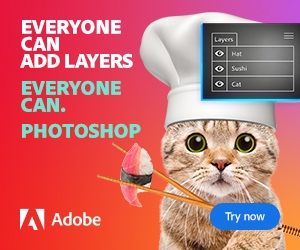Video editing is a powerful tool that transforms ordinary footage into engaging, cinematic stories. Whether you’re creating content for YouTube, Instagram, or professional projects, your editing skills play a huge role in how your message is received. The right techniques and tools can help you turn raw footage into a polished, compelling video that grabs your audience’s attention and keeps them engaged.
In this article, we’ll explore the core principles of video editing, dive into essential techniques, and highlight some useful tools that can make the editing process smoother and more effective.
The Power of Video Editing
Video editing is not just about cutting clips together—it’s about creating a seamless experience for your audience. The process allows you to craft a narrative, evoke emotions, and establish a mood, all while maintaining the viewer’s attention.
Here are a few key reasons why video editing is crucial for any creator:
Crafting a Story: Raw footage often lacks structure. Editing is where you shape the narrative, adding a flow that makes sense and draws the viewer in.
Visual Appeal: Editing is where you enhance the visuals. From color correction to adding effects, video editing is the final step in making your footage look professional.
Pacing and Rhythm: The pacing of your video is essential in keeping the audience’s attention. Proper editing allows you to create a rhythm that matches the content, whether it’s a slow-paced tutorial or a fast-paced action video.
The editing process is what helps you communicate your ideas clearly and make your videos stand out.
Essential Video Editing Techniques
Here are some essential techniques every video editor should master to create professional-quality content.
1. Cutting and Trimming
Cutting and trimming are the most basic yet crucial editing tasks. These actions help you eliminate unnecessary footage and focus on the best parts of your video.
Cut: This is the process of removing parts of a clip to shorten or rearrange it. It’s an essential technique for eliminating mistakes, filler content, or any unneeded footage.
Trim: Trimming involves adjusting the start or end of a clip to remove unwanted sections. It’s particularly useful for removing intro or outro moments that don’t add value to the final video.
Cutting and trimming are fundamental techniques that ensure your video stays concise and engaging.
2. Smooth Transitions Between Clips
Transitions help move the viewer from one scene to another without jarring interruptions. The right transitions can add visual style and contribute to the pacing of your video.
Basic Transitions: The most common transitions include cuts, fades, and dissolves. These are simple, smooth, and maintain the flow of your video without drawing too much attention to the transition itself.
Creative Transitions: For videos that require more flair, creative transitions like whip pans, zoom effects, or 3D spins can add a dynamic feel. However, be cautious not to overuse them, as too many fancy transitions can detract from the video’s overall impact.
Transitions are often the unsung heroes of editing. Used wisely, they create a seamless viewing experience.
3. Color Correction and Grading
Color correction and grading are vital techniques that improve the visual quality of your video and help you establish a particular mood or tone.
Color Correction: This involves adjusting the brightness, contrast, and white balance of your footage to make it look natural and consistent. Often, footage shot in different lighting conditions may have varying color tones, and color correction helps standardize them.
Color Grading: Once color correction is done, color grading is used to give your video a stylistic look. For example, you might apply warm tones for a nostalgic or cozy feel, or cool tones for a more dramatic or intense mood.
Color grading is one of the most effective ways to give your video a professional, cinematic feel.
4. Audio Editing
The importance of good audio cannot be overstated in video editing. A video with poor audio quality can be a huge turnoff, even if the visuals are great. Here’s what to focus on in audio editing:
Background Music: Background music can help set the tone and pace of your video. For example, upbeat tracks work well for energetic content, while soft, ambient sounds suit more reflective or tutorial-based videos.
Voiceover and Dialogue: Make sure your voiceover or any spoken content is clear. Use noise reduction tools to remove hums or hissing sounds that often come from background interference.
Sound Effects: Adding sound effects to enhance actions or transitions can elevate the immersion of your video. A door creaking, a swoosh sound, or footsteps can make your video feel more dynamic.
Good audio editing ensures that your video’s message is conveyed clearly and effectively.
5. Using Text and Titles
Text overlays, titles, and captions help reinforce your message and can be used to provide context, emphasize key points, or brand your video.
Titles: Introduce your video or add context to specific sections with title cards. These should be clear and easy to read, using contrasting colors for visibility.
Lower Thirds: Lower thirds are small text graphics that usually appear at the bottom of the screen, often used to introduce people, locations, or add extra information.
Captions: Adding captions helps make your video accessible to a wider audience. It’s a great way to ensure that your message is understood even if the viewer watches without sound.
Text can be a powerful tool for enhancing clarity and engagement in your videos.
6. Motion Graphics and Effects
For more advanced videos, motion graphics and special effects can take your video editing skills to the next level. Motion graphics add dynamic visual elements, such as animated text, logos, or other graphic elements, to make the video more exciting.
Lower Thirds & Animations: Use motion graphics for animated lower thirds or text that appears as you speak. This helps engage the viewer and directs their attention to important information.
Transitions and Visual Effects: You can create more dramatic effects, such as slow motion or time-lapse, to give your video more cinematic appeal.
Using motion graphics and effects effectively can elevate the production value of your video significantly.
Must-Have Video Editing Tools
To execute these techniques, you’ll need the right video editing software. Here are some popular tools that can help you unlock your full potential as an editor:
Adobe Premiere Pro: A professional-grade editing software with all the tools you need for trimming, transitions, audio editing, and motion graphics. It’s a go-to for filmmakers and YouTubers alike.
Final Cut Pro: Another industry-standard tool, Final Cut Pro is known for its user-friendly interface and powerful features. It’s ideal for Mac users and offers a seamless editing experience.
DaVinci Resolve: Renowned for its advanced color grading capabilities, DaVinci Resolve is a powerful tool for editors who prioritize color correction and grading.
iMovie: For beginners, iMovie offers an easy-to-use platform with essential features like trimming, transitions, and audio editing.
Each of these tools comes with its own unique set of features, so your choice depends on your skill level and the complexity of your projects.
Tips for Effective Video Editing
Keep it Simple: Don’t overcomplicate your edits. Focus on what enhances the story, and avoid cluttering your video with too many effects or transitions.
Maintain Consistency: Ensure a consistent style throughout your video, including fonts, colors, and effects. This helps establish your brand and keeps the video looking professional.
Watch Other Creators: Take inspiration from other video creators. Analyze their editing style, transitions, pacing, and use of effects to gain insights into what works and what doesn’t.
Take Breaks: Video editing can be intense. Taking breaks helps you avoid burnout and come back to your project with a fresh perspective.
Conclusion
Video editing is both an art and a science. It allows you to breathe life into your raw footage, shaping it into a coherent and engaging story. By mastering the techniques we’ve covered, such as trimming, color grading, audio editing, and using text and graphics, you’ll be able to produce professional-quality videos that capture the attention of your audience.
Whether you’re working on YouTube videos, short films, or social media content, mastering video editing is essential to standing out in a crowded digital landscape. With the right tools and skills, you can unlock the full potential of your footage and create videos that resonate with viewers.



